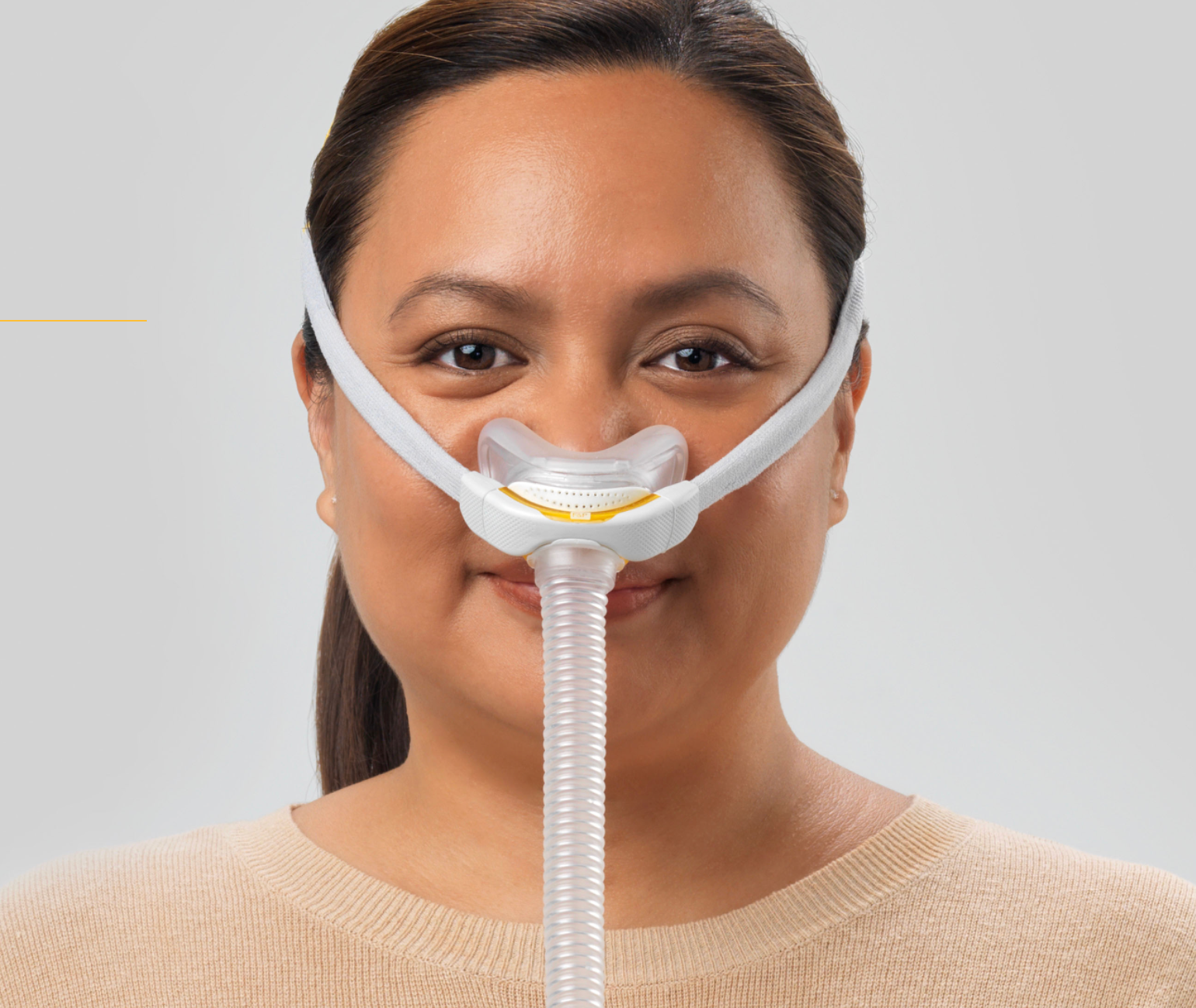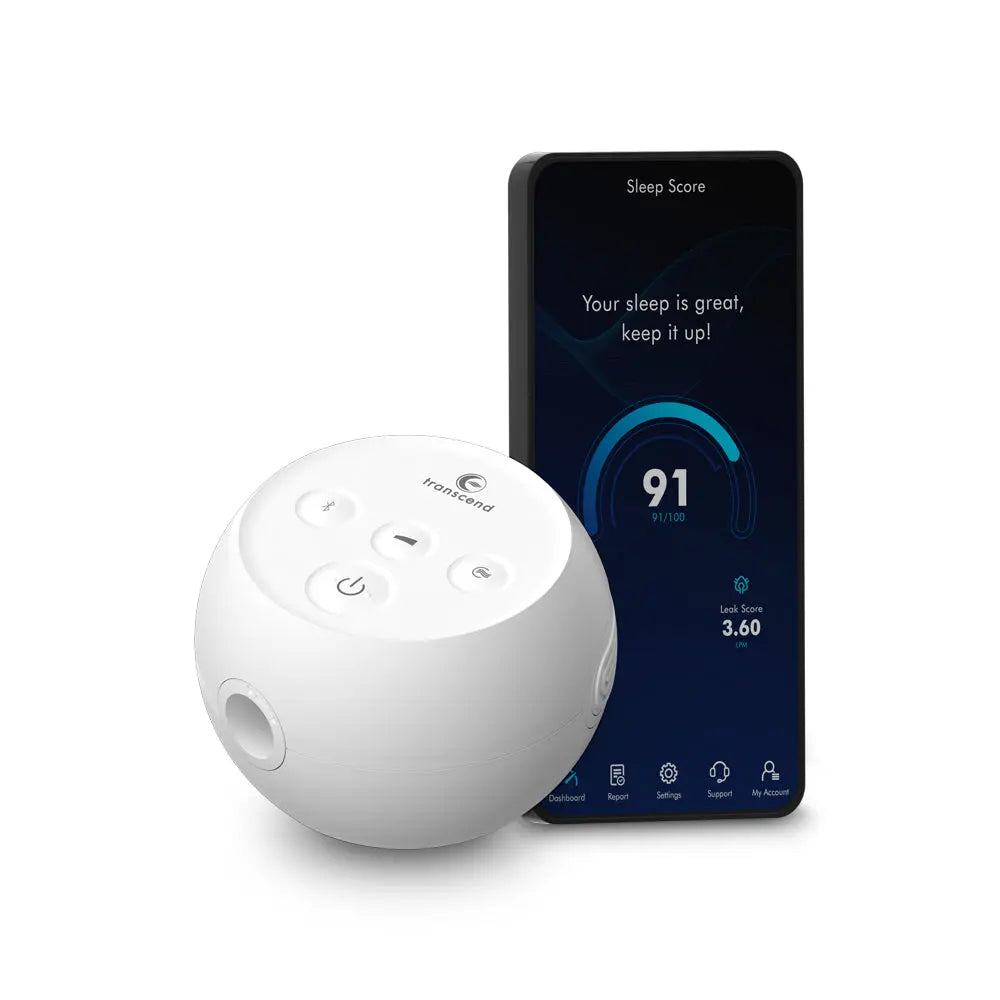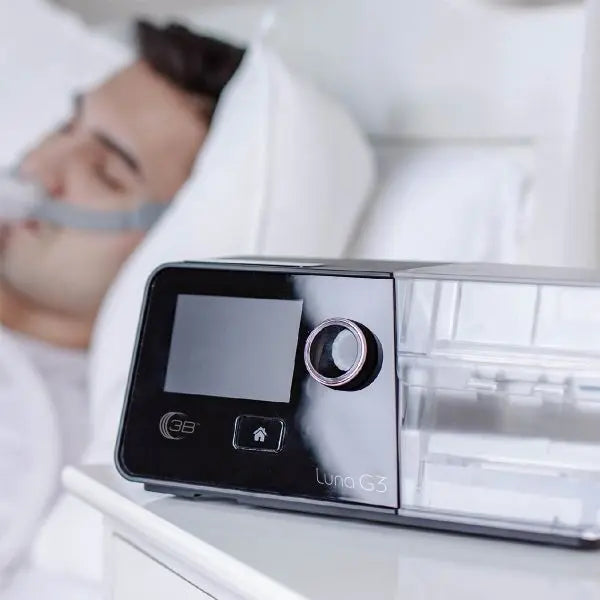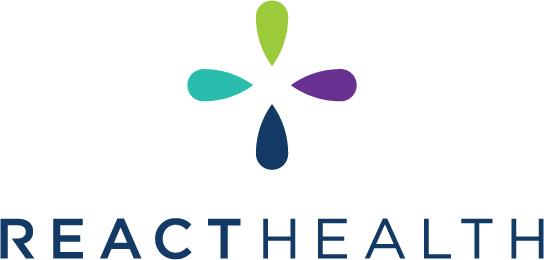Diagnosing Sleep Apnea While Awake – Northeastern University’s Breakthrough Research
Background: Sleep Apnea and Traditional Diagnosis
Sleep apnea is a common sleep disorder in which breathing repeatedly stops and starts during sleep, often due to airway blockages or irregular brain signals. An estimated 30 million people in the U.S. have sleep apnea, and if it’s left untreated it can lead to serious long-term effects like chronic fatigue, memory loss, and even depression. Traditionally, diagnosing obstructive sleep apnea (OSA) requires an overnight sleep study called a polysomnogram (PSG). During a PSG, patients sleep in a lab (or use a take-home kit) with numerous sensors recording breathing, oxygen levels, heart rate, brain waves, and more. Doctors then calculate an apnea-hypopnea index (AHI) – essentially counting how many times per hour the patient’s breathing is interrupted – to determine if sleep apnea is present. This gold-standard method is effective but cumbersome: patients must sleep in an unfamiliar setting while hooked to equipment, and scheduling such studies can take months. Simpler screening tools like questionnaires exist, but they tend to be unreliable in identifying sleep apnea. All of this means many people with sleep apnea go undiagnosed or face delays in getting treatment.
A New EEG-Based Approach at Northeastern University
Researchers at Northeastern University have discovered a groundbreaking new way to diagnose sleep apnea while patients are awake, potentially revolutionizing how this condition is detected. The work is led by Aarti Sathyanarayana, an assistant professor at Northeastern (with joint expertise in public health, computer science, and health technology). By focusing on patients’ brain signals instead of overnight breathing interruptions, Sathyanarayana and colleagues developed a novel method to accurately detect whether someone has sleep apnea even when the person is awake. “I don’t think anyone has tried to diagnose sleep apnea when awake because it sounds crazy, but we found evidence that it can be done,” Sathyanarayana explained, highlighting how unconventional yet promising this idea is. This new approach opens the door for mass screening of sleep apnea in the general population without requiring everyone to undergo a sleep lab study.
Study Details and Methodology
Sathyanarayana’s team drew on methods typically used for neurological conditions. In particular, they leveraged electroencephalograms (EEGs) – tests that record the brain’s electrical activity – to look for telltale patterns associated with sleep apnea. (EEGs are commonly used to detect abnormalities in brain waves, for example in epilepsy patients.) The researchers analyzed EEG data from patients with and without OSA and found clear differences in brain-wave activity between the two groups. In other words, people with sleep apnea exhibit a distinct “signature” in their brain activity that healthy sleepers do not, meaning the brain itself shows signs of the disorder. Remarkably, these differences were detectable not only during sleep but even while the patient was still awake (just as they were drifting off). This is especially notable because one would assume that without any actual apneic events happening (since the person is awake and breathing normally), it would be impossible to identify the condition – yet the team demonstrated it is possible.
A key innovation in the study was the use of an advanced data-analysis technique called Topological Data Analysis (TDA). TDA is a mathematical approach that examines the shape and structure of complex data. By applying TDA to the EEG recordings, the researchers could detect subtle differences in how various brain regions communicate in OSA patients versus non-OSA individuals. Essentially, this method looks at brain connectivity patterns as a whole, rather than just single points of data, making it easier to spot a unique fingerprint of sleep apnea in the brain’s electrical network. The team tested their EEG-based approach using a large dataset of pediatric patients (children) from a children’s hospital sleep databank, which included thousands of overnight EEG recordings. Importantly, the method proved accurate even in children, whose brains are still developing (and thus typically harder to analyze). This demonstrated that the EEG/TDA approach is robust and works in a challenging population. The findings established the potential to identify OSA “without requiring a full polysomnogram study”, marking an initial step toward easier and more scalable diagnosis.
Key Findings and Advantages
-
EEG Brain-Wave Patterns as Diagnosis: The study showed that EEG readings contain distinguishable patterns that separate OSA patients from those without OSA. In other words, brain-wave data alone could be used to tell if someone has sleep apnea.
-
Detection While Awake: Surprisingly, the diagnostic brain signal differences were present even while patients were awake (before sleep onset), meaning an individual doesn’t need to be sleeping or having an apnea episode for the test to work. This is the first time sleep apnea has been diagnosable in awake patients.
-
High Accuracy in Children: The EEG-based method worked well for pediatric patients. Children with sleep apnea showed brain activity differences compared to healthy children, a critical finding since kids often can’t undergo traditional sleep studies easily and may not exhibit obvious daytime symptoms of apnea.
-
Outperforming the Gold Standard: In trials, the brain-signal method was able to identify sleep apnea at least as well as – and in some aspects better than – the standard overnight apnea-hypopnea index test. This suggests it can match the diagnostic accuracy of full sleep studies.
-
Non-Invasive and Scalable: The approach only requires a brief EEG test, which involves placing a few electrodes on the scalp to measure brain waves. There’s no need for an all-night hospital stay or extensive respiratory hookups, making it far more convenient and scalable for screening large groups of people.
Comparing the New Method to Traditional Diagnostics
Conventional sleep apnea diagnosis vs. the new EEG-based diagnosis can be contrasted in terms of procedure, comfort, and accessibility. A conventional diagnosis relies on observing breathing interruptions during sleep (the AHI from an overnight PSG). This means the patient must sleep for several hours under observation, often in a clinic, with numerous sensors (nasal airflow monitors, oxygen clips, belts around the chest, EEG leads, etc.) attached to their body. It’s a time-intensive, expensive process that many find uncomfortable, and scheduling these studies can have long wait times. By contrast, the new method requires only an EEG reading while the patient is awake, potentially during a short visit to a doctor’s office. Instead of waiting to capture apneas during sleep, doctors can look for the brain’s electrical signature of OSA before the patient even falls asleep. This is a major shift in diagnostic technique, making it mucheasier and likely cheaper for people to get evaluated. In fact, Sathyanarayana’s EEG approach was shown to “best the gold standard” – meaning it met or exceeded the accuracy of the traditional AHI-based diagnosis in the study’s comparisons. Essentially, it’s a faster, less burdensome test that can achieve similar or better results.
Another benefit of the EEG method is its potential for earlier detection. Traditional PSGs are usually only done when a patient shows obvious symptoms (like loud snoring and daytime sleepiness). But many cases, especially in children, go unnoticed because, for instance, kids with OSA often don’t show extreme daytime drowsiness. With a quick EEG screening, healthcare providers could proactively check patients (during routine check-ups or specialist visits) for hidden signs of sleep apnea without waiting for severe symptoms to manifest. This comparison highlights that the EEG-based test could complement or even replace the standard overnight test in many situations, lowering the barrier to diagnosis for millions who might have untreated sleep apnea.
Technological Advancements and Future Developments
The Northeastern team’s approach capitalizes on recent technological advancements in both brain monitoring and data analysis. EEG devices are non-invasive and have been around for decades, but what’s new is applying them specifically for sleep apnea diagnosis. The innovation wasn’t in inventing a new device, but in rethinking how to use brain data for a completely different purpose – detecting a breathing disorder. The use of Topological Data Analysis (TDA) as a tool is a cutting-edge development that comes from the field of data science and mathematics. TDA allowed the researchers to sift through complex EEG data and extract features (patterns of brain connectivity) that would be hard to see with traditional statistical methods. This advanced analysis is part of why the EEG method could outperform conventional diagnostics; it finds subtle, holistic differences in brain activity that indicate apnea’s impact on the brain.
From a consumer technology perspective, this research is paving the way for portable or at-home sleep apnea tests. Prof. Sathyanarayana has already filed a patent on the EEG-based detection method. A major goal is to integrate this diagnostic approach into affordable, consumer-grade EEG devices. These could be simple headband-like gadgets or even enhancements to existing wearable tech. In an interview, Sathyanarayana likened it to how people use smartwatches today: just as many individuals now routinely monitor their heart rate, exercise, and sleep patterns with wearables, one day people might own a personal EEG headband for sleep health. Such a device could run a quick brain-wave scan at bedtime and alert the user if there are signs of sleep apnea – no overnight lab required. This means widespread screeningcould become feasible on a population level, catching many more cases that would otherwise go undiagnosed.
Another promising development is using the EEG method not just for one-time diagnosis, but for tracking the severity of sleep apnea over time. Because the brain-wave patterns could correlate with how severe the condition is, a wearable EEG could potentially monitor whether a patient’s sleep apnea is improving with treatment or getting worse. For example, if someone starts using a CPAP machine or gets surgery for sleep apnea, regular EEG check-ups while awake might show their brain activity returning to a normal pattern, confirming the treatment’s effectiveness. In the future, this could give doctors and patients a convenient feedback loop: adjust treatments and immediately see measurable changes in the brain signals.
Implications for Medical Practice
If this EEG-based awake diagnosis method becomes widely adopted, it could significantly change medical practice around sleep disorders. Primary care physicians might screen at-risk patients (such as loud snorers or those with obesity and hypertension) with a quick EEG test during a routine visit, instead of immediately referring them to sleep labs. This early screening could help prioritize who truly needs an overnight study or intervention. For pediatricians, this tool is especially valuable – children rarely tolerate overnight studies well, and as noted, their symptoms can be subtle. An office-based brain-wave test could catch pediatric sleep apnea early, leading to timely treatments (like adenotonsillectomy or orthodontic interventions) before the child suffers learning or growth delays.
Sleep specialists, too, might use EEG screening to manage patient care more dynamically. It could reduce the backlog of patients waiting for polysomnography if some are effectively diagnosed in advance. Over time, if consumer EEG devices become common, patients could even be empowered to self-monitor their condition at home and consult doctors when the data shows issues. This sort of patient-owned monitoring – analogous to diabetics checking blood sugar at home – would be a new paradigm in sleep medicine. Moreover, the discovery that OSA leaves a persistent imprint on brain function invites a broader neurological perspective on sleep apnea. It reinforces that OSA is not just a “sleep/breathing” issue but also a condition that can alter brain activity and possibly cognitive health. Clinicians may begin to pay closer attention to neurocognitive symptoms (memory, attention, mood) in OSA patients, knowing there could be underlying brain changes.
However, the researchers caution that while we now know there is a brain signal difference, we don’t yet fully understand what it represents. The EEG differences might be related to the brain’s response to chronic sleep disruption, such as signs of fatigue, reduced alertness, or memory impairment. Further investigation is needed to link specific brain-wave patterns with particular consequences of sleep apnea. This means that, in medical practice, the EEG diagnostic tool would likely be used alongside clinical evaluation rather than as a standalone oracle – at least until we learn more. Still, as a screening and tracking instrument, its implications for improving patient care and expanding access to diagnosis are very exciting. In sum, this advancement could lead to earlier detection, more personalized treatment, and better long-term outcomes for the millions suffering from sleep apnea.
Related Publications and Future Research
The findings of this research were published in the Journal of Sleep Research in 2025 by Aarti Sathyanarayana and colleagues. The paper, titled “Topological Data Analysis Based Characteristics of Electroencephalogram Signals in Children With Sleep Apnea,” details the EEG/TDA methodology and the study results. This peer-reviewed publication provides the scientific foundation for the claims, demonstrating the statistical differences in brain connectivity patterns between children with OSA and those without. Earlier versions of this work were presented at scientific conferences (for example, an IEEE Engineering in Medicine and Biology Society conference in 2023) to gather feedback from the research community. The team has also filed a patent to protect the EEG diagnostic technique, indicating confidence that their method can be translated into real-world devices or software.
Moving forward, there is plenty of follow-up research on the horizon. One important step is to replicate and validate the results in broader populations – including adults with sleep apnea – and to refine the system’s accuracy. Researchers will also be working to decipher the nature of the brain differences detected: Are they linked to oxygen deprivation during apneas, sleep fragmentation, or downstream effects like daytime fatigue? Answering these questions will likely involve more in-depth EEG studies and perhaps combining EEG data with other measurements (such as cognitive tests or brain imaging). Another avenue of research is integrating this diagnostic approach with consumer technology. Trials could test off-the-shelf EEG headbands to see if they collect sufficient data for the algorithm to work, which would be a big step toward at-home use. The Northeastern team envisions this as the beginning of a new way of looking at sleep apnea – treating it not only as a respiratory condition but also as one that can be detected and understood through brain science. With many questions yet to explore, scientists are optimistic that this approach will spur a “whole new way” of research and ultimately improve how we care for patients with sleep apnea.
Bibliography
-
Sathyanarayana, Aarti, et al. (2025). "Topological Data Analysis Based Characteristics of Electroencephalogram Signals in Children With Sleep Apnea." Journal of Sleep Research.
-
Northeastern University. (2025). "Diagnosing sleep apnea while awake? Northeastern researcher proves it’s possible." Retrieved from Northeastern News.
-
MedicalXpress. (2025). "Researchers find new EEG method to diagnose sleep apnea in awake patients." Retrieved from MedicalXpress.
-
IEEE Engineering in Medicine and Biology Society. (2023). Proceedings of the IEEE EMBS Conference: Advances in EEG Signal Analysis for Sleep Disorders.








Leave a comment
This site is protected by hCaptcha and the hCaptcha Privacy Policy and Terms of Service apply.